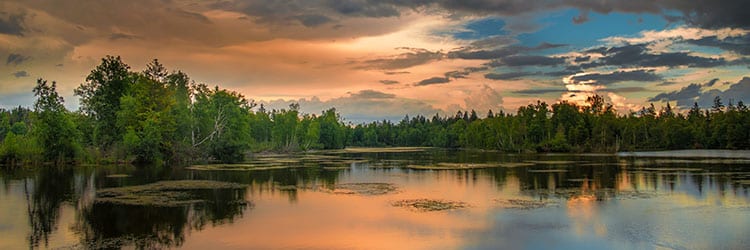Struggling with unwanted aquatic weeds? Let’s explore various non-chemical control methods for your pond, lake, or waterway. Learn about physical removal, physical shading, mechanical control, biological control, and cultural control techniques. Discover the best eco-friendly solution for your needs.
Aquatic weeds can be a nuisance for any pond or lake owner. They can disrupt the ecosystem, hinder recreational activities, and even pose a threat to local wildlife. While chemical solutions are often the go-to method for weed control, they can have harmful effects on the environment. This blog post explores different non-chemical aquatic weed control methods that are both effective and eco-friendly.
Physical Removal of Aquatic Weeds
Physical removal is one of the most straightforward non-chemical aquatic weed control methods. It involves manually removing the weeds from the water body. This can be done using tools like rakes and cutters, or even by hand. While this method can be labor-intensive, it provides immediate results and is ideal for smaller bodies of water.
Physical Shading
Physical shading is an effective method to control the growth of aquatic weeds in lakes. This approach involves limiting sunlight penetration into the water, which is essential for the photosynthesis process that aquatic plants rely on for growth.
Methods of Physical Shading
Benthic Barriers: These are fabric-like materials that cover the weeds and prevent them from growing. They are placed on the lake bed and block sunlight, thus inhibiting weed growth. The Lake Bottom Blanket is this type of physical shading.
Aquatic Sun Blockers or Pond Dyes: These products are used to tint the pond water, limiting sunlight penetration that submersible pond weeds need to grow. These products are applied early in the growing season to significantly hinder pond weed growth.
Shading Structures: Strategic placement of shading structures, such as floating fountains or artificial plants, can reduce sunlight exposure and impede weed growth.
Mechanical Control of Aquatic Weeds
Mechanical control of aquatic weeds is another effective method for non-chemical aquatic weed control. This involves using machines like underwater weed cutters, harvesters, and mowers to remove the weeds. Mechanical control is best suited for larger water bodies with dense weed infestations.
Biological Control of Aquatic Weeds
Biological control involves using natural predators to manage weed populations. This can include introducing species like sterile grass carp, beetles, or weevils that feed on the weeds. Biological control of aquatic weeds is a sustainable method that can provide long-term results. However, it’s important to consult with a local environmental agency before introducing any new species into a water body.
Cultural Control of Aquatic Weeds
Cultural control involves managing the conditions of the water body to make it less conducive for weed growth. This can include practices like regular water quality testing, maintaining a healthy fish population, and avoiding over-fertilization from lawn spill off. Cultural control of aquatic weeds is a preventative measure that can help keep weed populations in check.
While aquatic weeds can be a challenge to manage, there are several non-chemical aquatic weed control methods available. Whether it’s through physical removal, physical shading, mechanical control, biological control, or cultural control, you can take back your pond naturally and create a healthier environment for all its inhabitants.

